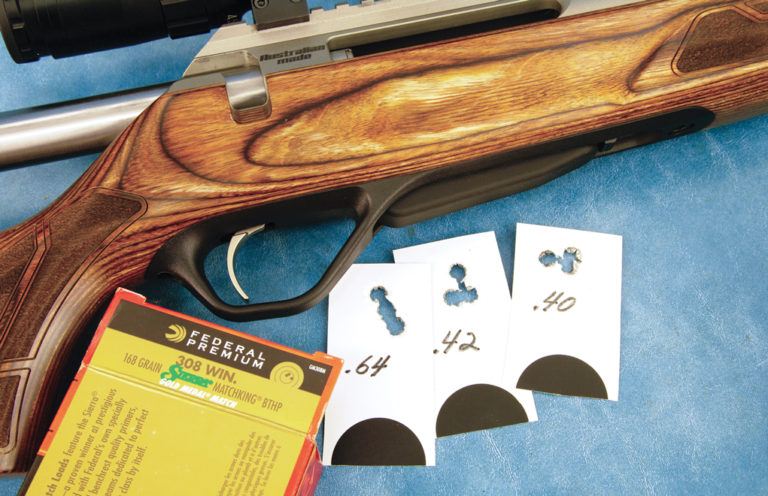
The Lithgow LA102 has no problem dishing out sub-MOA pills, one after another.
What the Lithgow LA102 offers:
- Cold-forged, military-grade steel barrel.
- High-tensile steel receiver.
- Three lug bolt.
- Adjustable length of pull.
- Available in .223 Rem., .243 Win., .308 Win and 6.5 Creedmoor.
- 2.9-pound trigger pull.
- Picatiny rail for optics addition.
- Threaded Muzzle.
- Three-postion thumb safety.
- Walnut Stock.
One of the more dynamic gun companies of the past decade has been Legacy Sports of Reno, Nevada. Once known primarily as the importer of the Howa line of centerfire rifles and barreled actions, the company has gradually diversified to where in addition to Howa, it now represents Lithgow Arms, Webley & Scott, Escort, Pointer and Citadel, which together have virtually every firearm type covered — from semi-auto, slide action, O/U and break-open single-shot shotguns, to bolt-action rimfire and centerfire rifles and M1911 handguns. And with their NikkoStirling line, Legacy has riflescopes and other electronic sighting devices as well.
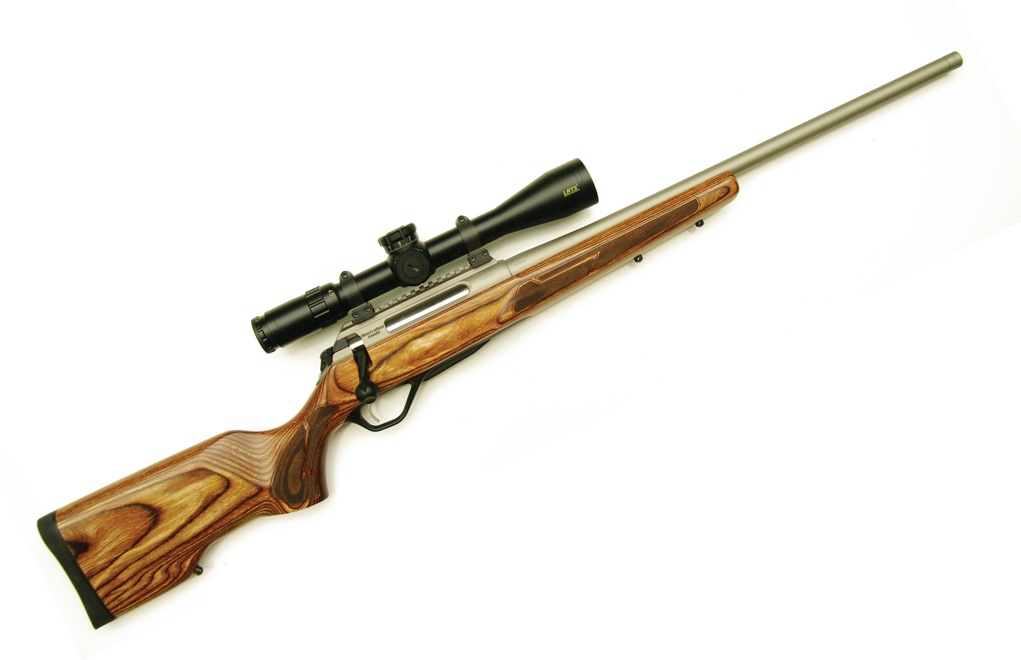
Legacy’s latest acquisition is the Lithgow line of bolt-action rimfire and centerfire rifles from Australia. That this company would introduce a line of sporting rifles was pretty much an inevitable no-brainer, because Lithgow has been Australia’s national armory since 1912. From Gallipoli to Afghanistan, Australian Defense Forces have carried Lithgow small arms into battle.
The country’s current martial arm is the F90, a selective-fire assault rifle in 5.56×45 NATO that has gained quite a reputation among various armed forces and law enforcement agencies around the world. Lithgow, incidentally, is also the name of the town in New South Wales where the factory is located that employs 130 people.
More Rifle Articles:
- 5 Articles On The 6.5 Creedmoor You Must Read
- Buying the Perfect Precision Scope
- A Different .22: Savage B Series Hardwood
- Loading the .308 Winchester
- Best Precision Rimfire Rifles Guaranteed To Own The Bullseye
For their bolt-action sporting rifles, Lithgow started with clean sheets of paper, the results of which are the Model LA101 Crossover rimfire and the LA102 centerfire, both of which were introduced last year. The Model 102 was originally introduced only in a black synthetic stock but it’s now available in a brown wood laminate as well. It, along with the 6.5 Creedmoor chambering, are new this year, but the Creedmoor won’t be available for another couple of months, so the .308 Win. version got the nod.
A Growing Fat-Bolt Family
Not surprisingly, the Lithgow folks chose to go with the “fat bolt” tri-lug system for the 102. I say “not surprisingly” because most of the truly new bolt-action rifles introduced in the United States and in Europe during the past decade have adopted this design approach. When coupled with a tubular receiver and an injection-molded stock, a highly accurate, serviceable rifle can be produced more economically than can your typical Mauser-type design.

Two perfect examples are Winchester’s XPR and Ruger’s American, both of which are priced substantially lower than their flagship siblings — the Model 70 and M77 Hawkeye, respectively. That’s not to say that all rifles of this genre are “value priced” and selling in the $500 range. It’s just that if a manufacturer wants to produce a budget-class rifle, the fat-bolt tri-lug is the way to go.
In the case of the Lithgow 102, however, its suggested retail price of $1,499 has it competing with Weatherby‘s Mark V, Winchester’s Model 70 Super Grade and the pricier models in Browning’s X-Bolt line. You all know the defining characteristics: The bolt body is fatter than a Mauser-type bolt, allowing the locking lugs to be formed by relieving metal at the head.
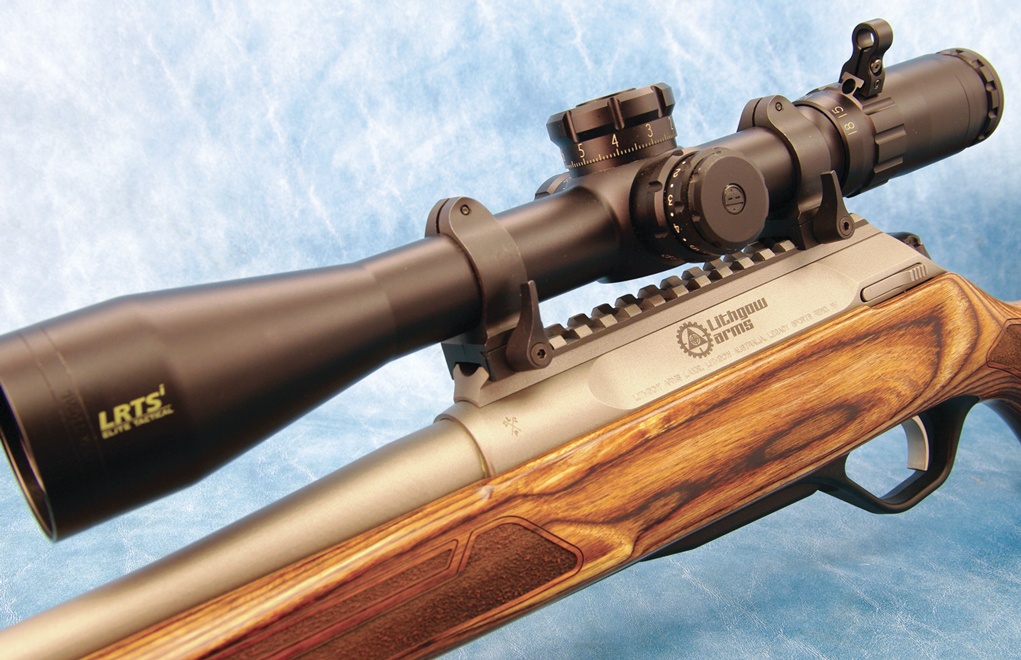
However, inherent with the design is that the depth of the locking lugs is limited, so there has to be more of them. Normally there are three, but with the Austrian Roessler 6 there are two rows of three, and with the Weatherby Mark V Magnum, there are three rows of three for a total of nine locking lugs. The number of lugs notwithstanding, all are oriented on 120-degree centers, making for a shorter bolt rotation (handle lift). With there being no protruding lugs, only a round hole is needed for the raceway in the receiver, which allows closer tolerances between the two. The result is a much smoother and wobble-free bolt travel and faster-cycling action.
Under The Lithgow’s Hood
The 102’s receiver starts out as round bar stock, so it’s tubular. Lengthwise flutes are milled into the sides below the stock line to reduce weight, as are the facets milled into the upper sides of the receiver at the “10:30” and “1:30” positions to lend a hexagonal look. Like all other actions of this type, the ejection port is minimally sized to retain as much rigidity to the receiver as possible.
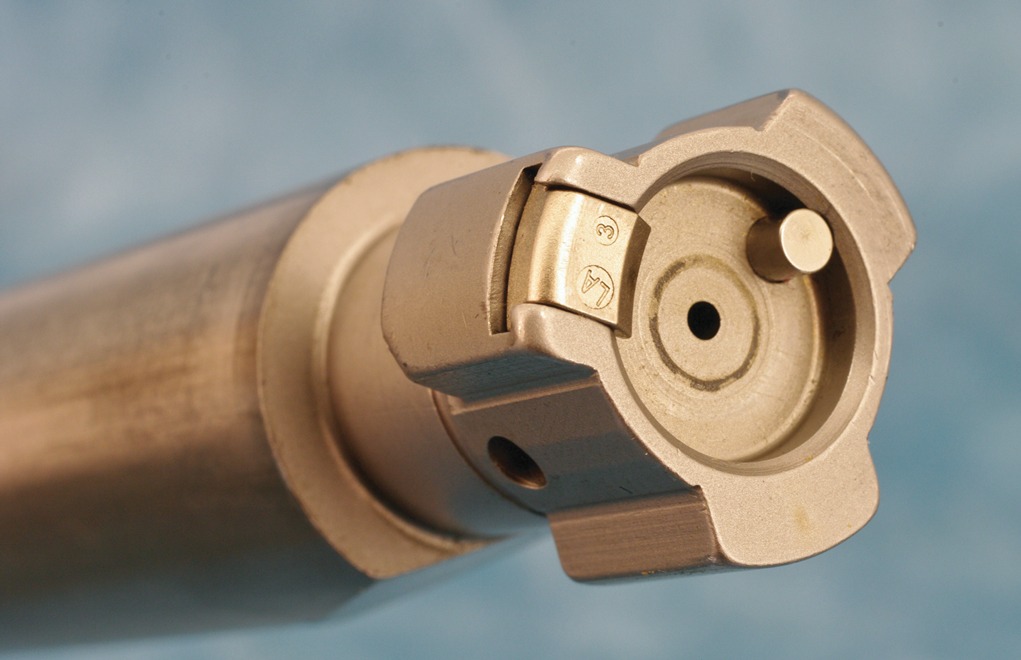
The 15-slot Picatinny rail is so well machined that it can almost pass for being integral; in fact, the catalog states that it is integral, but it’s not. Unlike most tubular receivers, this one does not employ a separate washer-type recoil plate sandwiched between the barrel shank and receiver face like the Remington 700, Savage 100-series or Mossberg Patriot, among others. Rather, a simple transverse slot is milled into the underside of the receiver ring that engages a steel plate imbedded in the stock. It’s just another way of transferring recoil forces and it’s as effective as any.
The bolt stop/release is a simple pivoting lever at the left side of the receiver bridge that also serves as a bolt guide, without which the bolt would rotate freely once out of battery. This characteristic is shared by all fat-bolt systems. Like its 22-inch hammer forged barrel and bolt handle, the entire receiver is Cerakote finished in a matte silver that closely resembles raw stainless. It’s quite handsome.
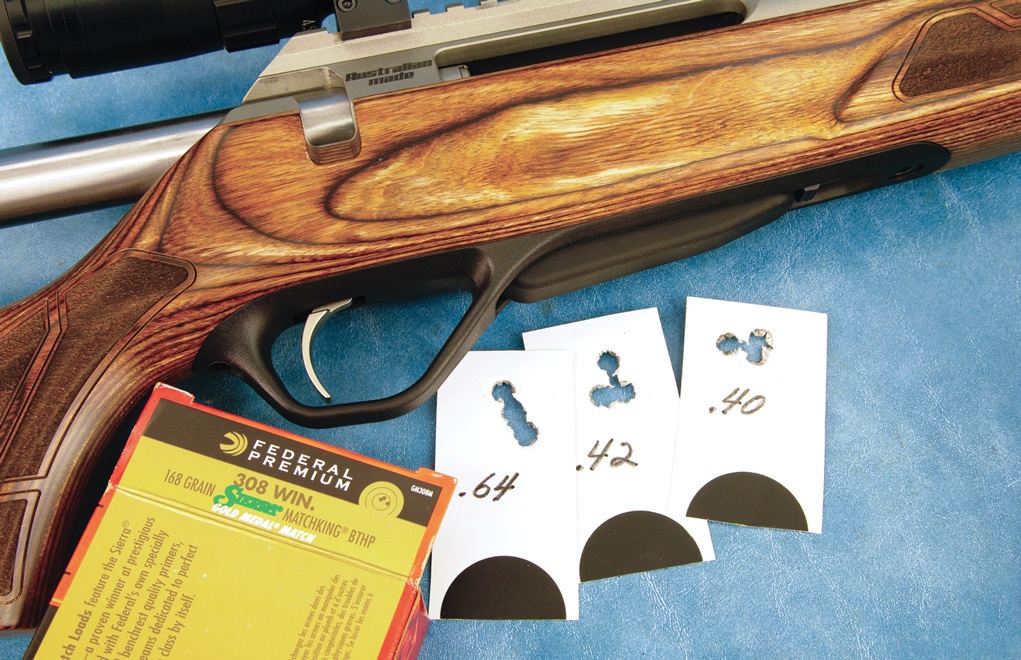
Looking at the head of the bolt, you could be looking at one out of a Winchester XPR, Ruger American, T/C Venture, Merkel M16, Franchi Momentum, Sabatti Saphire, Sauer 100 or a Steyr SM12, for that’s how similar are the bolt heads of tri-lug fat bolt actions! All have recessed faces, employ plunger-type ejectors, and all have their extractors sliding radially within a T-slot in the face of the right-side locking lug.
Here’s the bottom line: Once you commit to this design, there’s not a lot of room for originality. But, then again, it all works so seamlessly there’s no incentive to do so. That’s why there are now 17 tri-lug rifles available in the United States marketplace manufactured here and overseas that share the exact same design and functional characteristics.
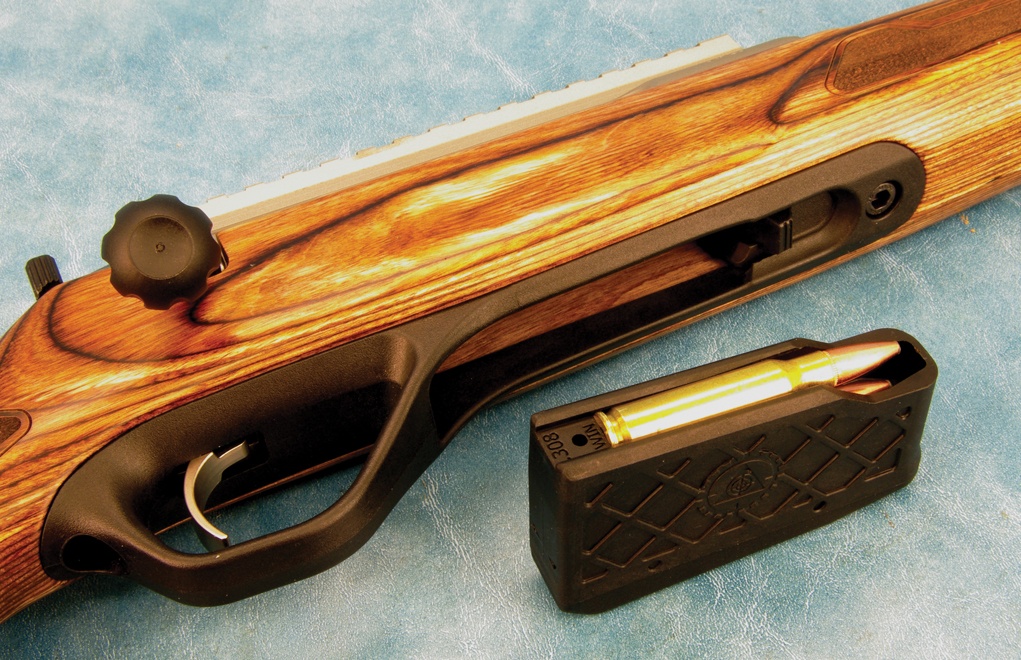
Anyway, at the rear of the bolt we find the fire-control system, and it’s fully contained within the cap or shroud, thus being similar to that of a Model 70 Winchester. When pulled rearward from its 3 o’clock “fire” position to an approximate 4:30 position, the firing pin is locked, and so is the action. This makes it different from all other three-position Model 70-type safeties because it’s normally the middle position that engages the safety — but does not lock the bolt. In this middle position, the bolt can be removed, and by depressing a small button on the shroud, the firing pin assembly can be pulled free of the bolt body for routine maintenance. Rotating the wing to the 6 o’clock position keeps the safety engaged and locks the bolt.
Because the fire control system is fully contained within the bolt shroud, the fully adjustable trigger mechanism, which is housed in a massive non-ferrous casting, houses nothing but the trigger system. The adjustment screws are of course set and sealed at the factory, so I assume tampering would void any warranty.
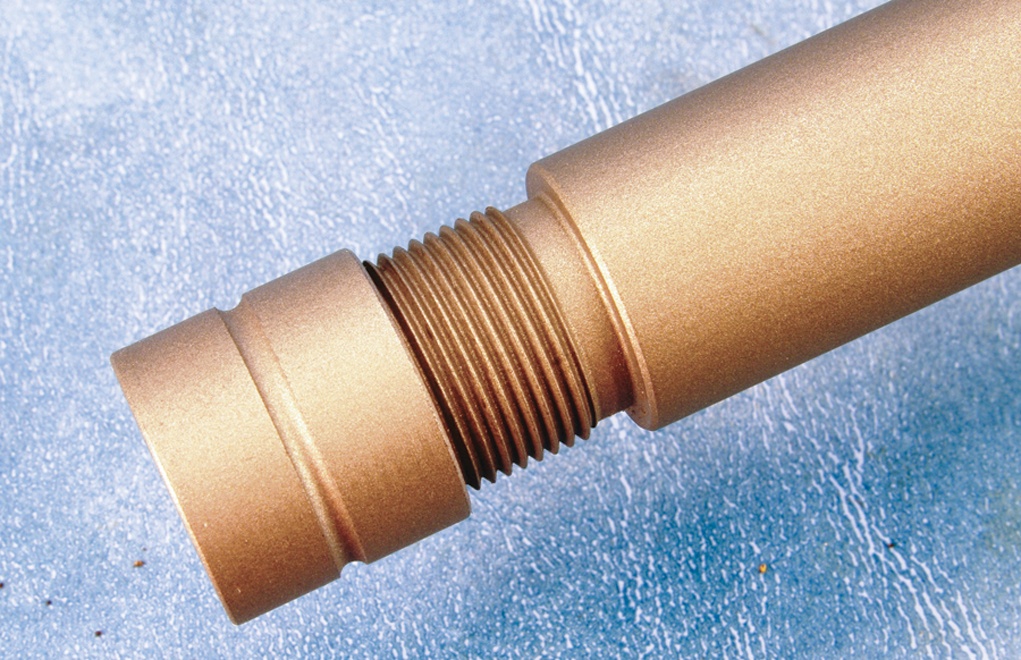
With this gun, the recoil plate also serves as a bedding surface for the receiver ring. That, and a small steel platform that engages the rear action screw are the only support points for the receiver. It’s similar to true pillar bedding in that the receiver is supported at only two small contact points. The hammer-forged barrel is fully floated from the receiver on out.
The one-piece single-stack polycarbonate magazine is among the very best of its type. It weighs nothing, it’s virtually indestructible, it has integral feed lips that can’t be bent and it’s easy to charge. Cartridges feed almost effortlessly, and the magazine itself is independent of the stock. In other words, when lifting the barreled action free of the stock, the magazine and its release button come with it. The stock, then, serves only to protect the magazine and provide a handle for the rifle.
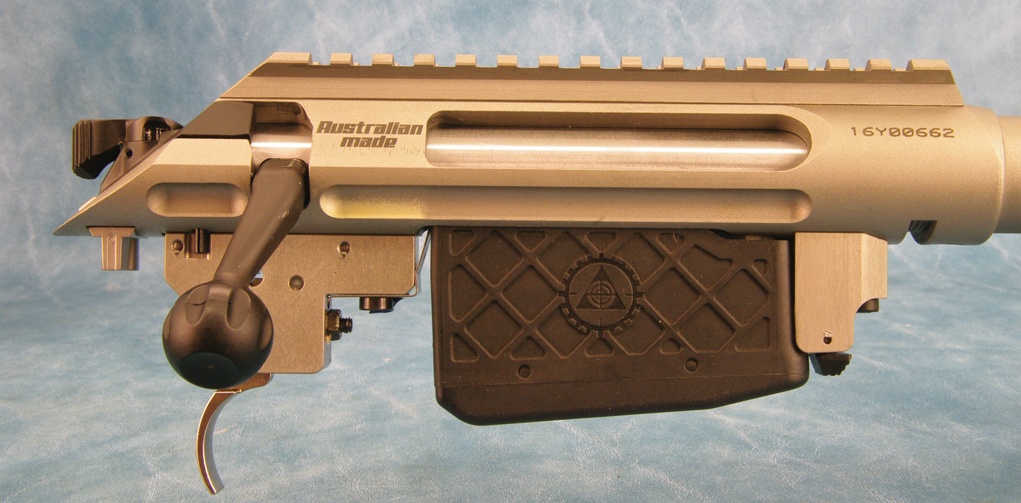
The stock is comprised of 1/16-inch veneers of firearms-grade maple laminate, which makes it just about as inert as a synthetic — and a helluva lot more attractive! Of course, laminates are a bit on the heavy side compared to synthetics of the same geometry — in this case, 8.2 pounds for the laminate vs. 7.7 for the synthetic.
Lending a rather distinctive look to this rifle is the butt hook directly behind the grip cap. It does provide more room for the left hand to squeeze and slide the rear bag for minor elevation adjustments, but the area behind the cut-out is virtually parallel with the bench, so you don’t have near the adjustment latitude that an angled, conventional toe line provides. In addition, the stippled grip and forearm panels are attractive, functional and very well executed.
Testing For Accuracy
To ready the gun for a little range work, I mounted a Bushnell Elite Tactical 4.5-18x44mm scope using 30mm Warne QD lever rings. With the Bushnell aboard, the field-ready rig weighed exactly 10.5 pounds — so it’s not exactly a mountain rifle!
The .308 Win. is one of my favorite rifle calibers to test and evaluate; it’s very accurate, and with the many match loadings available, it can bring out the best in a rifle’s design. Also, it doesn’t dislodge your fillings when shooting off a bench, yet it’s enough gun for 90 percent of the world’s game.

As it turned out, this particular example of the Lithgow LA102 proved to be more than accurate. The star was Federal’s Matchking load, and the first three 3-shot groups measured 0.42, 0.40 and 0.64 inches! Even with a slightly warm barrel, the last two groups still measured an impressive 0.72 and 0.79 inches, for a 15-shot average of 0.59 inches!
And as is evident from the attached data table, the Black Hills load wasn’t far behind. Even the Browning BXR “deer load” averaged just over 1 MOA, with the “worst” load posting a 1.35-inch average. That, sports fans, is an accurate huntin’ rifle!
The Bottom Line
It’s hard to find fault with this rifle. It’s beautifully made, the bolt glides like it’s on ball bearings, it feeds and extracts flawlessly, the trigger breaks like a glass sliver at 2.9 pounds, and it’s accurate as hell. At $1,499, it’s the priciest of the various tri-lug fat bolt rifles out there, but given what the gun offers, it’s fairly priced. The synthetic version lists at $1399.
The only regret was that we couldn’t yet get the 6.5 Creedmoor version for a trial run, for based on past experiences with that cartridge — and especially with Hornady ammo — we can only imagine what kind of groups we could have gotten. That’s combination you should think hard about trying for yourself.
Editor's Note: This article originally appeared in the August 2018 issue of Gun Digest the Magazine.

Next Step: Get your FREE Printable Target Pack
Enhance your shooting precision with our 62 MOA Targets, perfect for rifles and handguns. Crafted in collaboration with Storm Tactical for accuracy and versatility.
Subscribe to the Gun Digest email newsletter and get your downloadable target pack sent straight to your inbox. Stay updated with the latest firearms info in the industry.

![Best Concealed Carry Guns In 2025 [Field Tested] Wilson Combat EDC X9S 1](https://gundigest.com/wp-content/uploads/Wilson-Combat-EDC-X9S-1-324x160.jpg)


![Best 9mm Carbine: Affordable PCCs [Tested] Ruger Carbine Shooting](https://gundigest.com/wp-content/uploads/Ruger-Carbine-Shooting-100x70.jpg)
![Best AR-15: Top Options Available Today [Field Tested] Harrington and Richardson PSA XM177E2 feature](https://gundigest.com/wp-content/uploads/Harrington-and-Richardson-PSA-XM177E2-feature-100x70.jpg)
